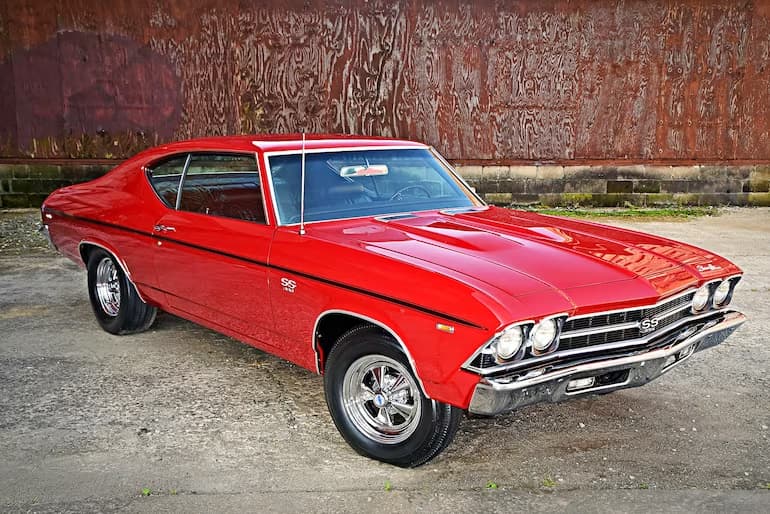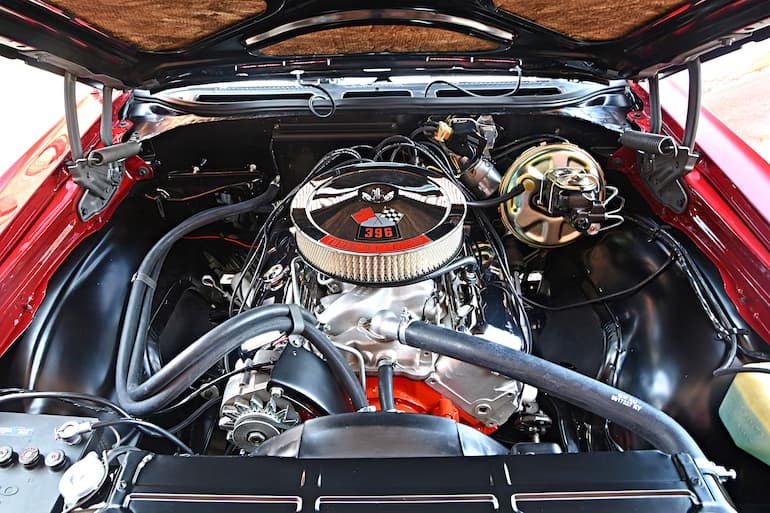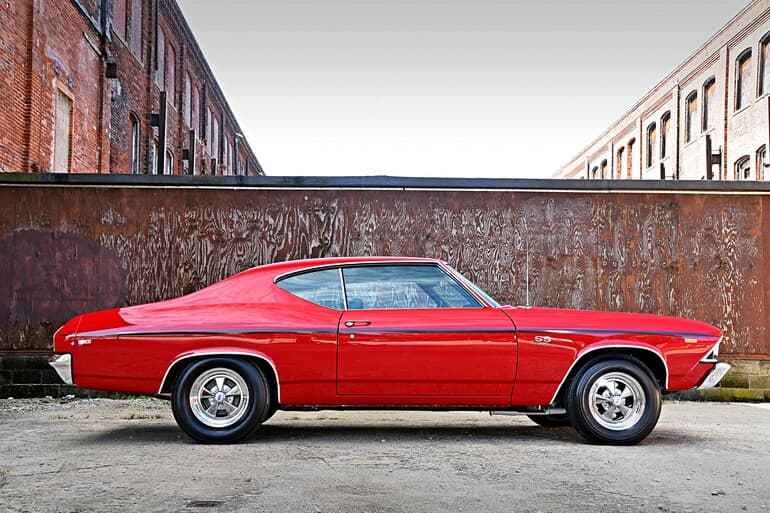
Introduction
If you’re a car enthusiast or collector, restoring a classic car is often a labor of love. One of the most iconic muscle cars of the 1960s is the 1969 Chevrolet Chevelle SS, with its sleek body and powerful engine. In this comprehensive guide, we’ll explore everything you need to know about restoring a 1969 Chevelle SS with a L78 396/375 number matching motor, including its history, restoration process, and maintenance tips. The 1969 Chevelle SS is a legendary car that was produced during the golden age of American muscle cars. With its aggressive styling and powerful engine, it has become a highly sought-after collectible car. Restoring a classic car like the Chevelle SS can be a rewarding experience, allowing you to own a piece of automotive history and preserving it for future generations.
History of the 1969 Chevelle SS
The 1969 Chevelle SS was a classic American muscle car that was produced by Chevrolet from 1964 to 1977. It was a high-performance version of the popular Chevelle model and was designed to compete with other muscle cars of the era, such as the Ford Mustang and Pontiac GTO. The 1969 Chevelle SS underwent several design changes from previous models, including a new grille, redesigned rear bumper, and revised taillights. However, the most significant change was the introduction of the L78 396/375 Number Matching Motor, which provided increased power and performance. The L78 396/375 Number Matching Motor was a big block V8 engine that produced 375 horsepower and 415 lb-ft of torque. It was a high-performance engine that was specifically designed for the Chevelle SS and was only available in 1969. Over the years, the Chevelle SS evolved from a simple performance package to a full-fledged muscle car, and by 1969, it was one of the most powerful and sought-after cars on the market.
What to Consider Before Restoring a 1969 Chevelle SS
Restoring a classic car is a labor of love that requires a significant amount of time, effort, and money. Before embarking on the restoration process, it’s important to consider a few key factors: Research and planning: Research the car’s history and specifications, and plan out the restoration process to ensure you have a clear understanding of the scope of the project. Budgeting: Restoring a classic car can be expensive, so it’s important to set a budget and stick to it. Consider all the costs associated with the restoration, including parts, labor, and any unforeseen expenses. Finding a reputable restorer: Look for a reputable restoration shop with experience working on classic cars, and ask for references and photos of previous projects. Locating parts: Finding parts for a 1969 Chevelle SS can be a challenge, so it’s important to research and locate reputable parts suppliers before beginning the restoration process.
The Restoration Process
The restoration process for a 1969 Chevelle SS can take anywhere from a few months to a few years, depending on the scope of the project and the availability of parts. Stripping the car down: The first step in the restoration process is to strip the car down to its bare frame and body. This allows for a thorough inspection of the car’s condition and helps identify any areas that need repair or replacement. Bodywork and paint: The bodywork and paint are critical aspects of the restoration process. Any rust, dents, or other imperfections must be addressed before the car can be painted. Engine and transmission rebuild: The engine and transmission are the heart of the car, and rebuilding them is a critical step in the restoration process. The L78 396/375 Number Matching Motor should be rebuilt by a professional engine builder who has experience with classic engines. Interior restoration: The interior of the car should be restored to its original condition, using period-correct materials and colors. Suspension and brake upgrades: Upgrading the suspension and brakes can improve the car’s handling and safety. This is especially important if the car will be driven regularly. Electrical and wiring upgrades: Updating the car’s electrical system and wiring can improve reliability and reduce the risk of electrical problems. Final assembly and testing: Once all the components have been restored and upgraded, the car can be reassembled and tested to ensure that everything is functioning properly.
Tips for Maintaining a Restored 1969 Chevelle SS
If you’re a proud owner of a restored 1969 Chevelle SS, you know that keeping the car in pristine condition requires special care and attention. This classic car is an icon, and it deserves to be maintained correctly. In this article, we’ll discuss some essential tips for maintaining a restored 1969 Chevelle SS. Before diving into the tips, let’s take a brief look at the history of the 1969 Chevelle SS. The SS (Super Sport) was a performance package option for the Chevelle model line from Chevrolet. The 1969 model year was one of the most sought-after, and today it remains an icon of the muscle car era. Maintaining a restored 1969 Chevelle SS is crucial to preserve its value and history.
Cleaning and Detailing
Regular cleaning is vital for maintaining the car’s appearance. The first step is to find a suitable location for washing and detailing the car. Ideally, you should avoid washing the car in direct sunlight or on a hot day. Use a high-quality car wash soap and a soft sponge or microfiber cloth to avoid scratching the paint. After washing, use a chamois or microfiber towel to dry the car thoroughly. To maintain the car’s shine, you may want to consider waxing or polishing the car periodically. It’s essential to choose high-quality products that are suitable for the car’s paint and finish. Avoid using abrasive cleaners or tools that could scratch or damage the car’s surface.
Proper Storage
Proper storage is essential for maintaining the car’s condition, especially if you plan to store it long-term. The ideal storage location is indoors, away from direct sunlight, moisture, and extreme temperatures. If you don’t have access to an indoor storage location, consider investing in a high-quality car cover to protect the car from the elements.Before storing the car, make sure to clean it thoroughly and apply a coat of wax or sealant to protect the paint. It’s also a good idea to remove the battery and store it separately in a cool, dry location.
Regular Maintenance and Upkeep
- Check the engine oil and transmission fluid regularly and change them according to the manufacturer’s recommendations.
- Replace the air filter and spark plugs periodically to maintain the car’s performance.
- Check the brakes, suspension, and steering components regularly for wear and tear.
- Lubricate the chassis components and hinges periodically to prevent rust and corrosion.
- Oil and filter change: every 3,000 miles or every 3 months
- Air filter replacement: every 12,000 miles or every year
- Spark plug replacement: every 30,000 miles or every 2-3 years
- Brake inspection: every 12,000 miles or every year
- Suspension and steering inspection: every 12,000 miles or every year



